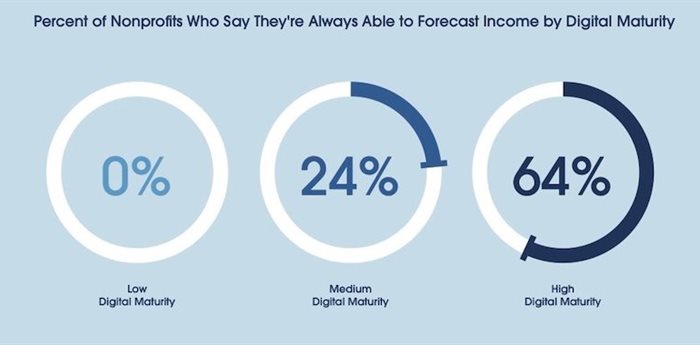Trending




 Sabre EMEA 2024 Awards: Razor PR, Retroviral top SA agenciesDanette Breitenbach
Sabre EMEA 2024 Awards: Razor PR, Retroviral top SA agenciesDanette Breitenbach
Elections 2024
Jobs
- Urban Data Lead Durban
76% of non-profits lack a data strategy - report


Salesforce.org saw firsthand how non-profit organisations around the world had to completely reimagine their relationships with donors while meeting the shifting needs of their communities. And yet, more than a third of the organisations surveyed in Salesforce.org’s 2021 Nonprofit Trends Report said their non-profit actually exceeded their fundraising goals in the past year.
Interviews with 1,250 respondents around the world provide an updated, holistic picture of the current state of the non-profit sector.
Bridging the gap between technology needs and access
While our collective struggle with Covid-19 continues, we’re encouraged by some of the emerging trends. In particular, is the increasing role that technology is playing in the conversation. The report’s second and third key findings show that investment in new technology was the primary way non-profits changed their fundraising approach in the past year, followed closely by a renewed emphasis on the importance of a clear data strategy.
When it comes to data strategy, bridging the gap between technology needs and access is becoming a priority. A 2018 Salesforce.org Nonprofit Trends Report showed that 78% of non-profits were struggling to keep up with growing demands for their programmes and services, but only 25% prioritised improving technology to meet those needs. In 2019, 85% of nonprofits said that technology was the key to the success of their organisation, but by 2020, only 16% of non-profits were ranked as “digitally mature.”
In this year’s report, digital maturity continues to matter as 64% of non-profits in the “high digital maturity” category said they were able to forecast income accurately, compared to 0% in the “low digital maturity” category.
Non-profits exceed fundraising goals with digital outreach
How are more than a third of non-profits exceeding their fundraising goals in 2021, during such a challenging time? Non-profits that use online platforms to better understand their donors have an edge. With gala fundraisers coming back slowly, if at all, new strategies like curated digital experiences that emphasise the power of storytelling are helping nonprofits be more successful.
Among the respondents in this year’s survey, 31% said that during the past 12 months, they’ve provided existing and prospective donors online access to a dashboard showing their donations in action. Of those who have made this change, 86% said it was impactful. In fact, 77% rate their marketing efforts as more successful than other nonprofits.
Solving problems with cloud-based technology
The report also shows non-profits getting more comfortable using technology to find new and creative ways to address immediate issues, 22% now fall into the “high” category in the digital maturity index, while 72% are at a “medium” level of digital maturity. Bridging the gap between technology and meaningful impacts, however, comes down to choosing the right platform.
Investments in cloud-based technology are helping nonprofits pivot to meet both current and future challenges, and organisations are seeing those investments pay off. During the past 12 months, 36% of respondents reported investing in new technology such as a CRM, collaboration/productivity tools, analytics, artificial intelligence (AI) and automation. Among those who made an investment, 87% reported it as impactful.
Data is changing non-profits’ approach to fundraising
As the effects of the pandemic continue to evolve, non-profits are once again reconsidering how to raise funds. While there may be some nostalgia for the old mechanisms of fundraising, non-profits now recognise they will continue to need a virtual strategy in addition to their in-person strategy.
Among respondents, however, 76% said they still need to develop a data strategy for their organisation, and 72% agreed or strongly agreed that donors expect remote access to key impact performance metrics. Effective donor engagement is more critical now than ever. As we move into 2022, we can’t predict exactly what trade-offs nonprofits will need to make as global conditions continue to shift. What is clear, however, is that digital channels are here to stay.













